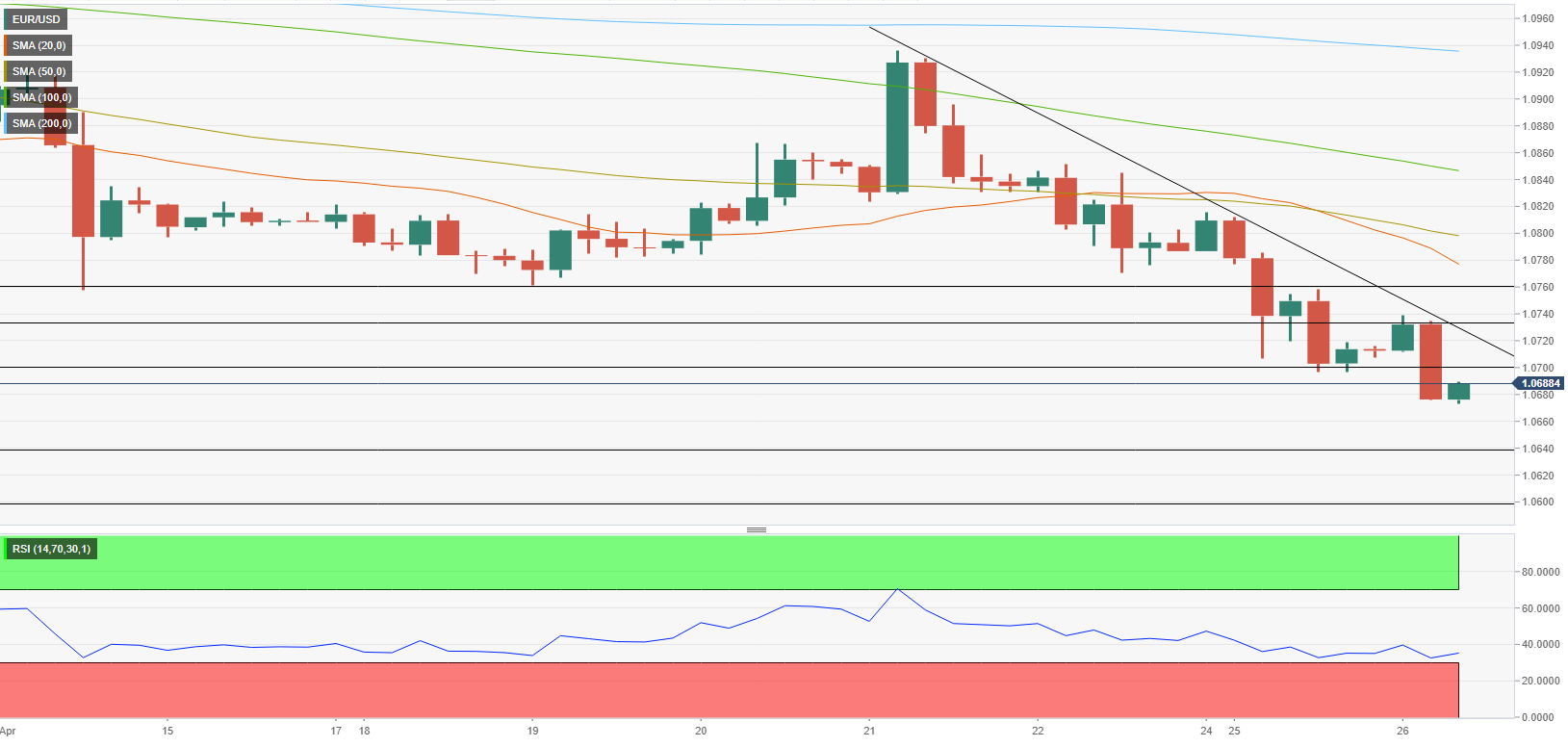EUR/USD has encountered fresh bearish pressure in the early European morning on Tuesday and touched its weakest level since March 2020 near 1.0670. Significant support aligns at 1.0640 and sellers could look to book their profits in case the pair falls toward that level.
The US Dollar Index, which tracks the dollar’s performance against a basket of six major currencies, rose 0.6% on Monday and continues to push higher toward 102.00. Although European stocks opened in positive territory, US stock futures are down between 0.4% and 0.6%, allowing the dollar to hold its ground against its major rivals.
In case US stocks futures reverse course and point to a positive Wall Street opening, the dollar could find it difficult to preserve its strength. Nevertheless, current market conditions are unlikely to pave the way for a risk rally. Investors are concerned about a lockdown in Beijing feeding into global inflation through supply-chain issues. Additionally, Russia acknowledged on Monday that there was no point in a ceasefire in Ukraine at the moment. Several news outlets reported that the European Union is contemplating imposing a price cap on Russian oil imports.
Meanwhile, European Central Bank policymaker Martins Kazaks reiterated he was in favour of hiking the policy rate in July after ending the Asset Purchase Programme at the start of the month. These comments, however, had little to no impact on the euro’s market valuation.
Later in the day, March Durable Goods Orders and New Home Sales data from the US will be looked upon for fresh impetus. The Conference Board will release the April Consumer Confidence Index as well. Even if these data come in better than expected, it might not be enough for risk flows to dominate the markets.

The latest candle on the four-hour chart closed below 1.0700. The Relative Strength Index (RSI) indicator on the same chart stays near 40 and the descending line coming from April 21 stays intact, highlighting EUR/USD’s bearish bias in the near term.
It’s worth noting that EUR/USD will touch its weakest level since April 2017 with a drop below 1.0635. Sellers might see such a move as a profit-taking opportunity and trigger a correction in the pair. In that case, 1.0700 (psychological level) aligns as the next recovery target before 1.0730 (static level) and 1.0760 (static level).
On the downside, a daily close below 1.0640 is likely to open the door for additional losses toward 1.0600 (psychological level) and 1.0570 (static level from March 2017).
